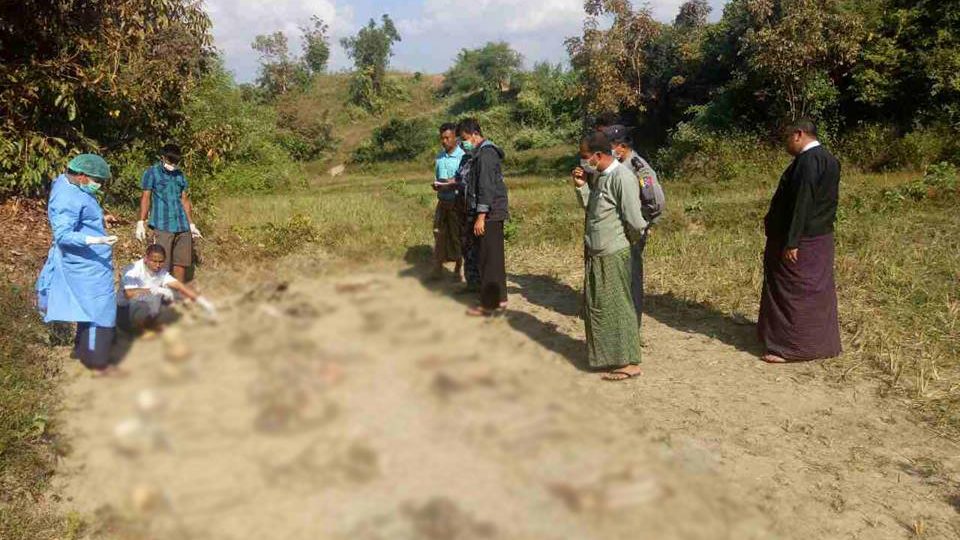Three days after Reuters reporters Wa Lone and Kyaw Soe Oo were arrested in Yangon on Dec. 12 for possessing “important security documents,” five ethnic Rakhine residents of Inn Din – an ethnically mixed village in Maungdaw Township – were also arrested.
The Rakhine detainees include three school teachers and a principal. A relative of one of the teachers told the New York Times on condition of anonymity that the five were arrested because they gave photos and documents to reporters from Reuters. The relative did not describe what the photos and documents contained.
Three days later, on Monday, the Facebook page of Myanmar’s military chief, Senior General Min Aung Hlaing, announced that the army had discovered a mass grave in the cemetery of Inn Din village and was investigating the deaths.
Yesterday, the senior general’s Facebook page reported that the grave contained 10 unidentified bodies of people who had been “killed and buried.”
“Strong legal action will be taken if any member of security forces is involved,” the Facebook post said.
According to satellite imagery collected by Amnesty International, Rohingya portions of Inn Din village have been torched since the Myanmar military began clearance operation in northern Rakhine State in late August. Rakhine Buddhist portions have been spared.
The relative of the detained teacher told the New York Times that the arrest of the five residents was an attempt by the government to hide the contents of the documents obtained by the Reuters reporters.
On Monday, Myanmar president Htin Kyaw authorized the prosecution of the two reporters under the colonial-era Official Secrets Act, which carries a maximum penalty of 14 years in prison.
More than a week after the arrest of Wa Lone and Kyaw Soe Oo, Myanmar authorities have not disclosed their location or allowed them access to counsel.
Human Rights Watch (HRW) announced today that Myanmar may be guilty of enforced disappearance, which is defined under international law as the arrest or detention of a person by state officials or their agents followed by a refusal to acknowledge the deprivation of liberty or to reveal the person’s fate or whereabouts.
Disappeared people are often at high risk of torture, particularly when they are detained outside of formal detention facilities such as prisons and police stations.
“Burmese authorities should immediately release the two Reuters journalists whose detentions appear aimed at stopping independent reporting of the ethnic cleansing campaign against the Rohingya,” said Brad Adams, Asia director for HRW. “Their secret, incommunicado detention lays bare government efforts to silence media reporting on critical issues.”




